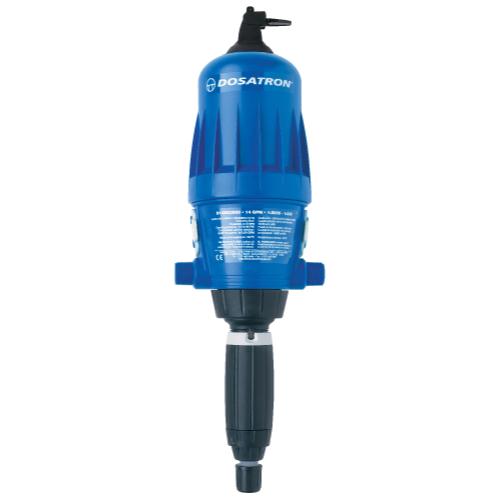Planning Your Summer Garden

It’s finally here folks! Spring has officially SPRUNG and summer is just around the corner, which means it’s time to start planning those gardens!
I’ve always loved summer more than any other season. To me, summer means beaches, playing outdoors, sunshine and perhaps best of all, FRESH VEGGIES!! Whether you participate in a local CSA, frequent the farmers market or plant your own garden, summer is a time to be outdoors and to revel in the magic that is the earth’s ability to make food grow. And while we fully encourage you to support your local farmers, we also believe that the best way to get fresh food into your kitchen is to grow it yourself! True, coaxing plants out of the ground is not always an easy task but the benefits are absolutely worth the efforts and we at CC Grow are here to help you every step of the way. So without further ado, lets get you gardening with our first edition in our Summer Garden Series.
Planning Your Summer Garden
Step 1: Setting an Intention
Gardens are not just a resource for food. In many ways they are an art form, a means of expression, a place to escape and a way to reconnect with ourselves as well as the earth. As such, they should be planned with consciousness, care and an idea of what we want to get out of them. This is why a great first question to ask yourself is, what do I want from my garden?
Are you looking to have a garden filled with as many options of vegetables as the supermarket, or are you feeling like you may only have time for one or two favorites? Do you want to try to plant something new and exotic, or are you feeding picky eaters? Is the appearance of your garden as important as it’s functionality?
These are the types of questions whose answers will help you narrow down your garden goals and set priorities. Then when it comes to questions of space and time, you can make appropriate decisions that will help you set yourself up for success.
Step 2: Gauging the Essentials

Even the most “green” gardener knows that soil, water and sunlight are essential when trying to get things to grow, so this is a great place to start when planning your garden.
Let there be Light!
Yes, lighting will change slightly with the seasons but you definitely want an idea of where you fall on the sunlight spectrum before you start digging into the dirt.
Take a few days to figure out where you are planning on putting your garden and watch the lighting. Does your area have full sunshine or are there obstructions? How long does that area get light? Many types of summer vegetables need at least 6 hours of light per day so try to choose an area that meets this requirement. If this is not possible, never fear! There are plenty of plants that actually prefer shade or partial shade but this is important to know ahead of planting time.
If you are completely lacking consistent sunlight, planting in containers is a great option as these can be moved to different areas to catch some rays. Keep in mind however that you don’t want to be lugging your pots around all day (especially heavy ones!) so planting shade-friendly plants will likely still be your best option.
Water, Water Everywhere or Not a Drop to Spare?
 Depending on where you live, you can generally make a good guess as to how much natural precipitation you are going to get during the summer.
Depending on where you live, you can generally make a good guess as to how much natural precipitation you are going to get during the summer.
Here in Colorado for example, we experience long periods without any rainfall so a good gardener will keep in mind that a lot of irrigation will need to be done by hand. If you’re planning a large garden, check out where your spigots are and if you’ll be able to set up a sprinkler or drip irrigation system. A drip system is one that utilizes tubes with tiny holes pre-punched into the surface. These tubes can be hooked up to a barbed fitting that will attach to your spigot. The tubes are then laid throughout the garden where they will—you guessed it—drip, providing a slow but constant source of water for your plants.
If an outdoor water source isn’t available, consider scaling down your garden as filling your watering can 50 times can be a real pain, or plant in containers that can be brought inside and watered in the kitchen sink.
Lets Get Dirty: Testing your soil quality
If you are planting your summer garden in containers or raised beds, you  will have the freedom to hand pick the soil that you are going to be working with. In order to make the most accurate choices, you will need to select your plants first, so feel free to skip to Step 3.
will have the freedom to hand pick the soil that you are going to be working with. In order to make the most accurate choices, you will need to select your plants first, so feel free to skip to Step 3.
If you are planning on planting directly in the ground however, you will first need to figure out your dirt quality and characteristics.The first thing you want to know about your soil is what kind of texture it has. Although you can send away a sample of your soil to local labs or extensions for testing, we recommend a simple hand and ribboning test.
The Hand Test: Grab a handful of soil (go on, don’t be shy!) and remove any rocks or bits of debris and break up large clods. Moisten the soil in your hand (an old college professor of mine used to swear that spit is best but we’re sure tap water works great too!) and squeeze it into a little ball. As you are working your dirt into a ball, try to feel what’s present in the soil. Does it feel grainy or smooth? Does it work into a ball easily or is it falling apart? Keep these qualities in mind as it will be important in the next step of the process.
Ribboning: After a minute or two of forming your soil into a ball, you are going to start “ribboning” it. To ribbon your dirt, push the ball with your thumb against your forefinger so it starts to flatten out. It will break off under it’s own weight, and these broken pieces are the bits you will need in order to figure out your soil content. Once you have a couple pieces of “ribbon”, use the below chart from the Colorado State Extension Service to identify your soil texture.

If your soil is overly sandy or very heavy in clay you will have to add amendments before planting or plant in raised beds. For more information on making raised beds and improving soil quality check out our next installment in our Summer Garden Series, “Prepping for Your Summer Garden”.
Now that you know the texture of your soil, you may want to test the pH levels (i.e. alkaline versus acidity). Most plants will still grow with a non-ideal pH but they will not produce to the best of their ability if the soil is too acidic or too alkaline. Home tests can give you a general indication of pH but they are not always very accurate. So if you are concerned about your pH levels, we recommend sending a sample to your local extension service. If you don’t want to deal with sending out a sample, you can also always do a quick search for what the common soil pH found in your area is to get an idea of what to expect in your region.
Step 3: Selecting Your Plants and Making a Plan
Figuring out which plants will grow best in your space based on soil, light and water can be a REAL pain. Lucky for you we at CC Grow have taken out the legwork by creating our plant Phytotheca. Simply enter your lighting, water and soil requirements using the drop down tabs and let the endless planting possibilities come to you! As you are selecting your plants, take special note of the required spacing and suggested companion plants and jot these down for later.
Next is getting an idea of the size of your space. Grab a measuring tape and a friend and walk your garden’s length and width, taking measurements as you go. On a piece of scrap paper or graphing paper draw out your garden roughly to scale and break it down using a key of 1 inch= 1 foot as has been done below for this sample 4’ x 10’ garden.
C = Cabbage, variety Copenhagen Market (1 plant per 1.5 square feet; grows well with lettuce);
K = Kale, variety Dwarf Blue (1 plant per square foot; grows well with Lettuce)
L = Lettuce, variety Black Seeded Simpson (9 plants per square foot; grows well with beets and kale)
B = Beets, variety Aviv Dark Red (4-9 plants per square foot; grows well with lettuce and cabbage)
Next you will want to start mapping out which plants will go where. First look at the spacing requirement for that plant to figure out how many you can fit into each row. In the above sample, we have selected cabbage, kale, lettuce and beets for our garden. Mark these into your map as has been done above, using the spacing requirements you wrote down earlier. Note that cabbage requires a slightly larger space than the 1’ squares allow so we have left the next square over open to accommodate this plant. You should also consider which plants grow well (or not well) together. In the above example, as lettuce seems to grow well with everything, we have decided to place that in the middle. As cabbage needs a bit more space, we chose to move those to an outside row in case they needed a little more room to sprawl. Use your judgment here if everything you are planting plays well with others! It’s your garden and should be designed to your liking so go wild!
If you are planting in containers the same rules still apply but the mapping will be much easier. Measure your containers and decide what plants will fit in that space. Keep in mind with container growing that there is not an infinite amount of space for your plants’ roots to grow so make sure you are checking out the “Sow Indoors” section within the plant profiles before selecting your crops. If a plant is not recommended for sowing indoors, it will likely not be the best choice for container growing whether indoors or out.
You’ve completed phase 1! Can you believe it?! Now, you’re not done yet, but within the next couple of weeks, you can start prepping your space and you will be well on your way to fresh, garden-grown veggies. Keep an eye on our Facebook page for help with the next phase of development in the second edition of the Summer Garden Series, Prepping Your Summer Garden. This edition will address how to prepare your soil and beds, start your seedlings and anticipate what you will need to get growing!




